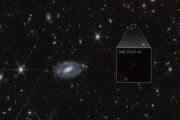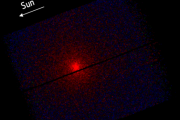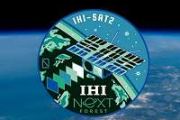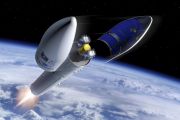
Copernical Team
New strategies for astronaut helmet safety and fire suppression
 In an era where NASA is extending human presence into low Earth orbit, the lunar surface, and Mars, the NASA Engineering and Safety Center (NESC) is at the forefront of addressing the complexities involved in human spaceflight safety. The NESC, a vital part of NASA's Environmental Control and Life Support Systems (ECLSS), Crew Systems, and Extravehicular Activity (EVA) discipline, led by NASA Te
In an era where NASA is extending human presence into low Earth orbit, the lunar surface, and Mars, the NASA Engineering and Safety Center (NESC) is at the forefront of addressing the complexities involved in human spaceflight safety. The NESC, a vital part of NASA's Environmental Control and Life Support Systems (ECLSS), Crew Systems, and Extravehicular Activity (EVA) discipline, led by NASA Te Space station-bound Dragon supply capsule filled with everything from experiments to coffee
Advanced Space Revolutionizes Moon Navigation with AI-Powered CAPSTONE Experiment
 Advanced Space, LLC has successfully deploying machine learning tools for space navigation technology in cislunar space. The CAPSTONE spacecraft embarked on pioneering software tests, establishing a foundational shift towards autonomous orbital navigation.
This advancement, known as SigmaZero, employs a Neural Network (NN) to identify and address navigational challenges, such as detecting
Advanced Space, LLC has successfully deploying machine learning tools for space navigation technology in cislunar space. The CAPSTONE spacecraft embarked on pioneering software tests, establishing a foundational shift towards autonomous orbital navigation.
This advancement, known as SigmaZero, employs a Neural Network (NN) to identify and address navigational challenges, such as detecting Spaceport Nova Scotia Partners with Impulso.Space for Enhanced Launch Services from Florida
 Maritime Launch Services Inc. (Cboe CA:MAXQ, OTCQB: MAXQF) and Impulso.Space USA Corporation, in a significant expansion of their partnership, have inked a five-year agreement. Under this deal, Maritime Launch will deliver vehicle payload capacity for both rideshare and dedicated launch missions from Spaceport Nova Scotia, while Impulso.Space will offer payload integration services from its newl
Maritime Launch Services Inc. (Cboe CA:MAXQ, OTCQB: MAXQF) and Impulso.Space USA Corporation, in a significant expansion of their partnership, have inked a five-year agreement. Under this deal, Maritime Launch will deliver vehicle payload capacity for both rideshare and dedicated launch missions from Spaceport Nova Scotia, while Impulso.Space will offer payload integration services from its newl Rocket Lab Marks Milestone with Successful Launch of NRO Mission from US Soil
 Rocket Lab USA, Inc. (Nasdaq: RKLB), a major player in launch services and space systems, has successfully executed the NROL-123 mission, named 'Live and Let Fly', for the National Reconnaissance Office (NRO). This mission, launched on March 21, 2024, at 03:25 EDT using the Electron launch vehicle from Launch Complex 2 in Wallops, Virginia, signifies Rocket Lab's first launch for the NRO from U.
Rocket Lab USA, Inc. (Nasdaq: RKLB), a major player in launch services and space systems, has successfully executed the NROL-123 mission, named 'Live and Let Fly', for the National Reconnaissance Office (NRO). This mission, launched on March 21, 2024, at 03:25 EDT using the Electron launch vehicle from Launch Complex 2 in Wallops, Virginia, signifies Rocket Lab's first launch for the NRO from U. NASA and SpaceX: Enhancing Space Exploration with the 30th Resupply Mission
 The International Space Station (ISS) anticipates the arrival of critical scientific experiments and technology demonstrations from NASA's latest commercial resupply mission, undertaken by SpaceX. This mission, marking the 30th of its kind, focuses on advancing studies crucial for understanding sea ice dynamics and facilitating plant growth in the microgravity of space.
Launched from Cape
The International Space Station (ISS) anticipates the arrival of critical scientific experiments and technology demonstrations from NASA's latest commercial resupply mission, undertaken by SpaceX. This mission, marking the 30th of its kind, focuses on advancing studies crucial for understanding sea ice dynamics and facilitating plant growth in the microgravity of space.
Launched from Cape Spacecraft with first Belarussian woman cosmonaut takes off
 Marina Vasilevskaya, Belarus' first woman cosmonaut, was aboard a Russian Soyuz spacecraft that blasted off successfully on Saturday headed for the International Space Station, the Russian Roscosmos space agency said.
"The Soyuz took off from Baikonur" in Kazakhstan at 1236 GMT, Roscosmos said in a statement, adding that the spacecraft went into orbit "as planned".
Initially programm
Marina Vasilevskaya, Belarus' first woman cosmonaut, was aboard a Russian Soyuz spacecraft that blasted off successfully on Saturday headed for the International Space Station, the Russian Roscosmos space agency said.
"The Soyuz took off from Baikonur" in Kazakhstan at 1236 GMT, Roscosmos said in a statement, adding that the spacecraft went into orbit "as planned".
Initially programm NASA's tiny BurstCube mission launches to study cosmic blasts
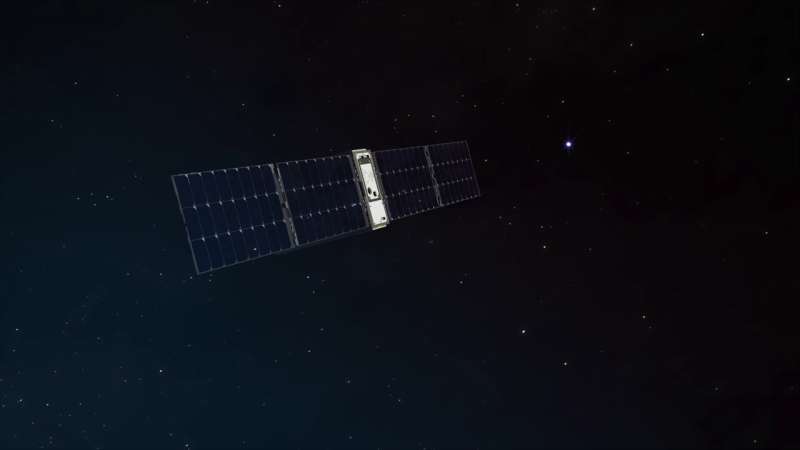
NASA's BurstCube, a shoebox-sized satellite designed to study the universe's most powerful explosions, is on its way to the International Space Station.
The spacecraft travels aboard SpaceX's 30th Commercial Resupply Services mission, which lifted off at 4:55 p.m. EDT on Thursday, March 21, from Launch Complex 40 at Cape Canaveral Space Force Station in Florida. After arriving at the station, BurstCube will be unpacked and later released into orbit, where it will detect, locate, and study short gamma-ray bursts—brief flashes of high-energy light.
"BurstCube may be small, but in addition to investigating these extreme events, it's testing new technology and providing important experience for early career astronomers and aerospace engineers," said Jeremy Perkins, BurstCube's principal investigator at NASA's Goddard Space Flight Center in Greenbelt, Maryland.
The unexplained: Giant Swedish archive logs paranormal phenomena

Newspaper clippings, books and first-hand accounts of people who said they visited other planets are catalogued in a giant Swedish archive on paranormal phenomena, attracting the curious and researchers from around the world.
The Archives for the Unexplained (AFU) claims to be the world's biggest library of paranormal phenomena, with 4.2 kilometers (2.6 miles) of shelves running underground.
Clas Svahn, 65, and Anders Liljegren, 73, who run the archive located in the southeastern town of Norrkoping, say they are neither superstitious nor believers, but rather "curious investigators of the unknown".
The AFU—the name of both the library and the association that has collected documentation for more than 50 years—is mainly comprised of books, but also more original documents, such as first-hand accounts of paranormal activity recorded on tape and photos of ghosts.
"What we are building here at AFU is depository knowledge," explains Svahn, showing AFP journalists around the 700-square-metre (7,535-square-foot) library.
"We're trying to get as much as we can on... every kind of unsolved scientific mystery that we can find... to make this available for the world."
The library receives around 300 visits each year, by appointment only.
A journey through ice and fire
 Image:
ESA astronaut candidate Rosemary Coogan lighting a fire during winter survival training in the snowy mountains of the Spanish Pyrenees as part of her basic astronaut training.
Image:
ESA astronaut candidate Rosemary Coogan lighting a fire during winter survival training in the snowy mountains of the Spanish Pyrenees as part of her basic astronaut training. 





